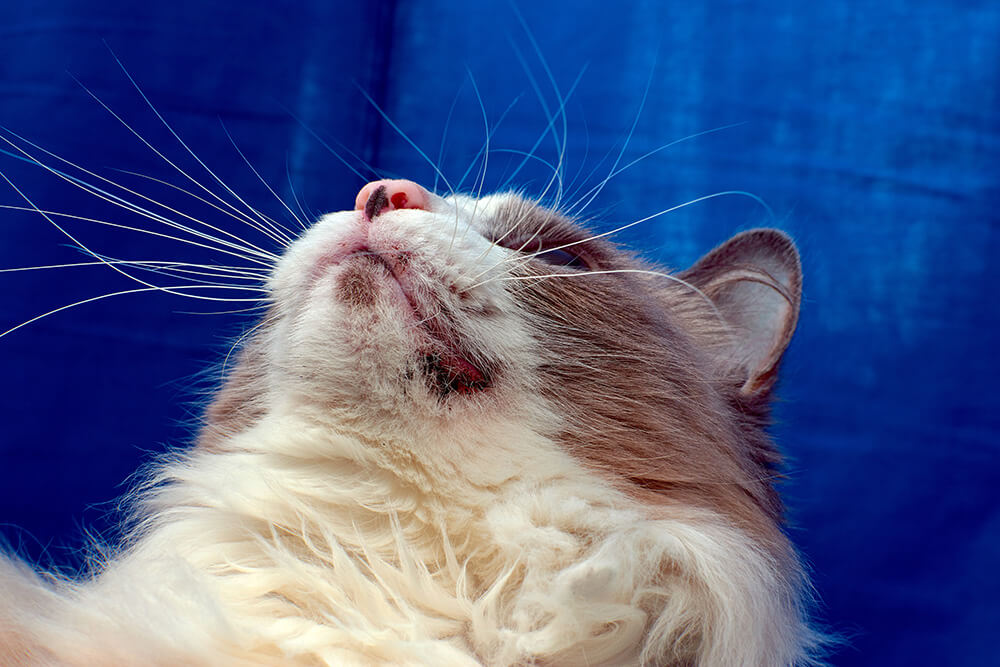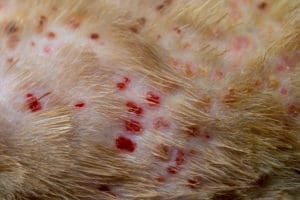You can relate to your cat’s love of treats and naps, but did you know that acne may be one more
thing you have in common? Despite their fastidious grooming, our feline friends may still experience skin problems, including the occasional pimple.
Unlike humans, feline acne isn’t the result of teenage hormones or clogged pores, and it may require different treatment. Kitties with severe, prolonged, or recurring breakouts need your help to get their skin under control.
For our feline friends, pimples and zits aren’t a rite of passage or an inevitable part of adolescence. Acne in cats is a disorder of follicular keratinization – it comes about when a protein called keratin gets trapped in your kitty’s hair follicles, forming blackheads. If bacteria is introduced, pimples and pustules (similar to human zits) may appear.

The bacteria responsible for acne looks for inflammation or breaks in your cat’s skin as a route to invade clogged follicles. For this reason, breakouts in cats are most often triggered by allergies. Common culprits include:
Sensitivities to certain plastics are fairly common in cats. If your feline friend eats or drinks from a plastic dish, switching to a stainless steel, glass, or ceramic one may help their skin clear up over time.
While acne in kitties isn’t commonly associated with excessively oily skin or poor hygiene, it is sometimes seen in cats who aren’t grooming themselves properly. Stress, injuries, or chronic pain can prevent cats from cleaning their skin, leading to breakouts. Seek veterinary help for a cat who has stopped grooming – it’s a clear signal of distress.

As with humans, acne in cats can be mild or severe. It may look red and cystic, or show up in the form of pimples, blackheads, or whiteheads.
Breakouts can occur anywhere on your cat’s body, but are most common on the chin, neck, and face, especially for kitties who are reacting to their food dish or toys. Kitties with long, dense fur and breeds with facial folds like Persians and British Shorthairs tend to be most frequently affected by acne. It’s a good idea to use snuggle sessions as an opportunity to check your cat’s skin for any abnormalities.
In the short term, a warm washcloth on the affected area can offer your kitty some relief and help bring pimples to the surface. Because breakouts aren’t a typical part of a cat’s life cycle, it is important to note that acne is a symptom of an allergic reaction, underlying skin condition, or an emotional or physical problem that is getting in the way of your cat’s grooming.
Feline acne is prone to bacterial infections that can become life-threatening, so it shouldn’t be ignored. Your vet can help you pinpoint the cause of your cat’s acne, may prescribe antibacterial treatments, medicated wipes, or special shampoos to calm inflamed skin and prevent future breakouts.
Be cautious of home remedies and keep your cat safe. The list of household items toxic to cats is long, so it is important to clear DIY treatments with your veterinarian before applying anything to your kitty’s skin.
Treating feline acne begins with addressing the underlying cause, so the best home remedies often include vet-recommended changes to your cat’s diet, environment, or flea prevention regimen.